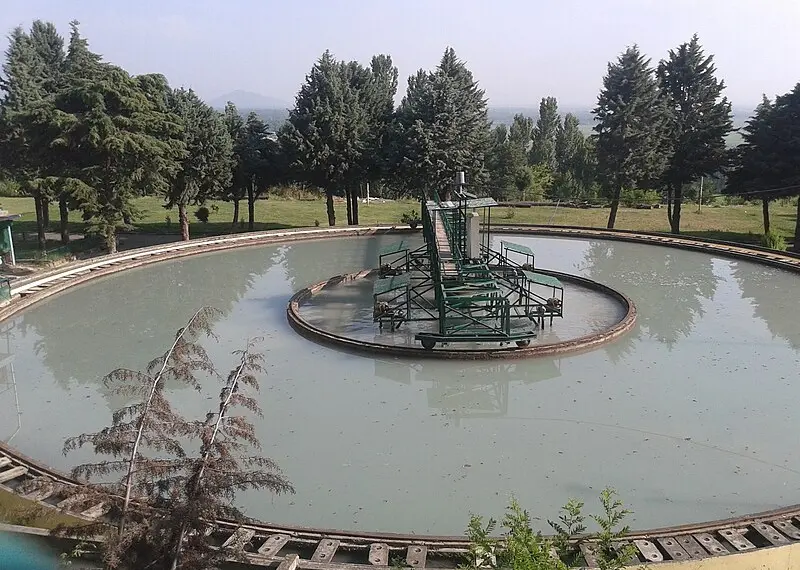Baramulla: The growing fears of a severe water crisis in Jammu and Kashmir have subsided significantly as continuous rainfall and snowfall this year have helped reduce the overall rainfall deficit from nearly 80% in February to around 31% now.
Meteorologists are hopeful that the situation will further improve, with more rainfall expected in the last week of this month and during April.
According to official data as per news agency JKNS states that the Kashmir Valley has recorded an average of 151 mm of rainfall till March 17 this year, compared to the normal average of 237 mm. During the same period, the Jammu region received 192 mm of rainfall against the normal of 259 mm.
Overall, from January 1 to March 17, 2025, Jammu and Kashmir along with UT Ladakh recorded 211.7 mm of rainfall, while the normal rainfall for this period is 308 mm. This has brought the cumulative rainfall deficit down to 31.27%.
Director of the Meteorological Centre in Srinagar, Dr. Mukhtar Ahmad, while providing district-wise data, said that Anantnag district recorded 167.6 mm of rainfall against the normal of 258 mm, resulting in a deficit of 35.04%. In Budgam, 107.9 mm of rainfall was recorded against a normal of 200.8 mm, with a deficit of 46.26%. Bandipora district received 210.5 mm of rainfall compared to the normal 249.4 mm, leaving a deficit of 15.60%. Baramulla recorded 219.1 mm of rainfall against the normal of 292.1 mm, with a deficit of 24.99%. Ganderbal recorded 196.2 mm of rainfall against the normal 248 mm, showing a deficit of 20.89%.
Kulgam district recorded 203.5 mm of rainfall, resulting in a deficit of 51.23%. Kupwara received 274.8 mm of rainfall compared to the normal 332 mm, marking a deficit of 17.23%. Shopian recorded 127.6 mm against 184.6 mm, with a 30.88% deficit. Srinagar district received 153.1 mm of rainfall against 252.8 mm, reflecting a 39.44% deficit. Pulwama district, however, recorded 156.2 mm of rainfall, slightly above the normal of 152.1 mm.
In Jammu province, Doda district received 211.9 mm of rainfall against a normal of 394.8 mm, with a deficit of 46.33%. Jammu district recorded 129.1 mm of rainfall compared to 191.7 mm, with a deficit of 32.66%. Kathua saw a 57.13% deficit, having received only 116.6 mm of rainfall against a normal of 272 mm. Kishtwar recorded 284.5 mm against a normal of 394.8 mm, leaving a deficit of 27.94%.
Poonch district, in contrast, received 220 mm of rainfall, which is above the normal 191.7 mm. Rajouri recorded 185.8 mm of rainfall against the normal 213.3 mm, with a deficit of 12.89%. Ramban recorded 397.9 mm against 527.9 mm, showing a deficit of 24.63%. Reasi district received 186.2 mm of rainfall against the normal 312.5 mm, with a deficit of 40.42%. Samba recorded 103 mm against 128.9 mm, reflecting a deficit of 20.09%, and Udhampur received 243.2 mm of rainfall against the normal 292.6 mm, with a deficit of 16.88%.
Jammu and Kashmir had witnessed an unusually dry winter this year. By mid-February, the region was reeling under an alarming 80% rainfall deficit, drying up rivers, streams, and springs, and raising concerns about a potential water shortage during the upcoming summer, which could have caused severe damage to agriculture and horticulture. However, the timely rainfall in March has brought considerable relief, reducing the deficit and reviving hopes for a stable water supply.
Farmers and fruit growers across the Kashmir Valley have expressed relief and optimism after the recent showers. Many who had been facing the prospect of huge losses due to the prolonged dry spell are now hopeful of a good harvest this season. Meteorologists have also assured that more rains are expected in the coming weeks, which will further ease the situation. — (JKNS)


